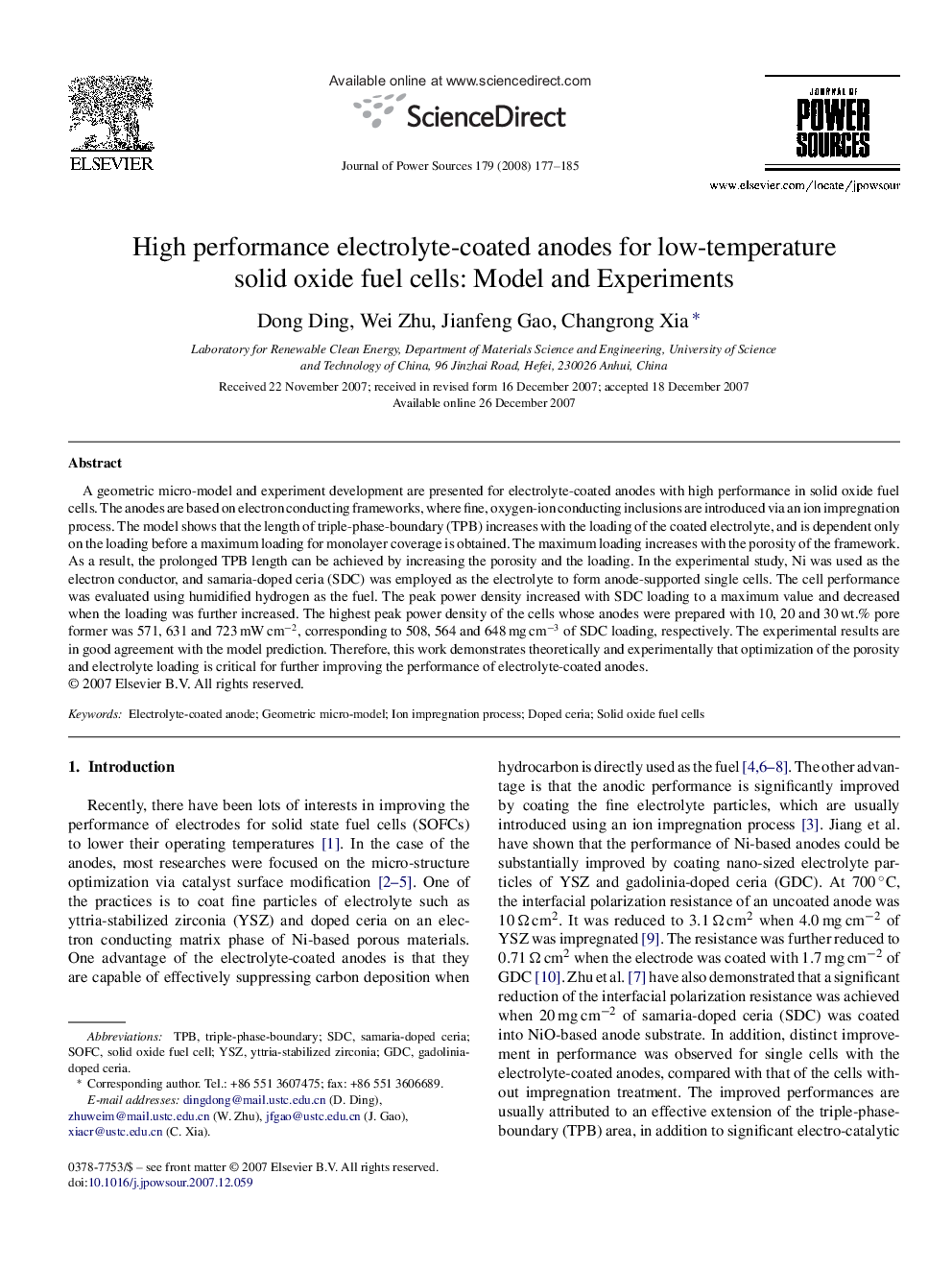| Article ID | Journal | Published Year | Pages | File Type |
|---|---|---|---|---|
| 1291421 | Journal of Power Sources | 2008 | 9 Pages |
A geometric micro-model and experiment development are presented for electrolyte-coated anodes with high performance in solid oxide fuel cells. The anodes are based on electron conducting frameworks, where fine, oxygen-ion conducting inclusions are introduced via an ion impregnation process. The model shows that the length of triple-phase-boundary (TPB) increases with the loading of the coated electrolyte, and is dependent only on the loading before a maximum loading for monolayer coverage is obtained. The maximum loading increases with the porosity of the framework. As a result, the prolonged TPB length can be achieved by increasing the porosity and the loading. In the experimental study, Ni was used as the electron conductor, and samaria-doped ceria (SDC) was employed as the electrolyte to form anode-supported single cells. The cell performance was evaluated using humidified hydrogen as the fuel. The peak power density increased with SDC loading to a maximum value and decreased when the loading was further increased. The highest peak power density of the cells whose anodes were prepared with 10, 20 and 30 wt.% pore former was 571, 631 and 723 mW cm−2, corresponding to 508, 564 and 648 mg cm−3 of SDC loading, respectively. The experimental results are in good agreement with the model prediction. Therefore, this work demonstrates theoretically and experimentally that optimization of the porosity and electrolyte loading is critical for further improving the performance of electrolyte-coated anodes.
